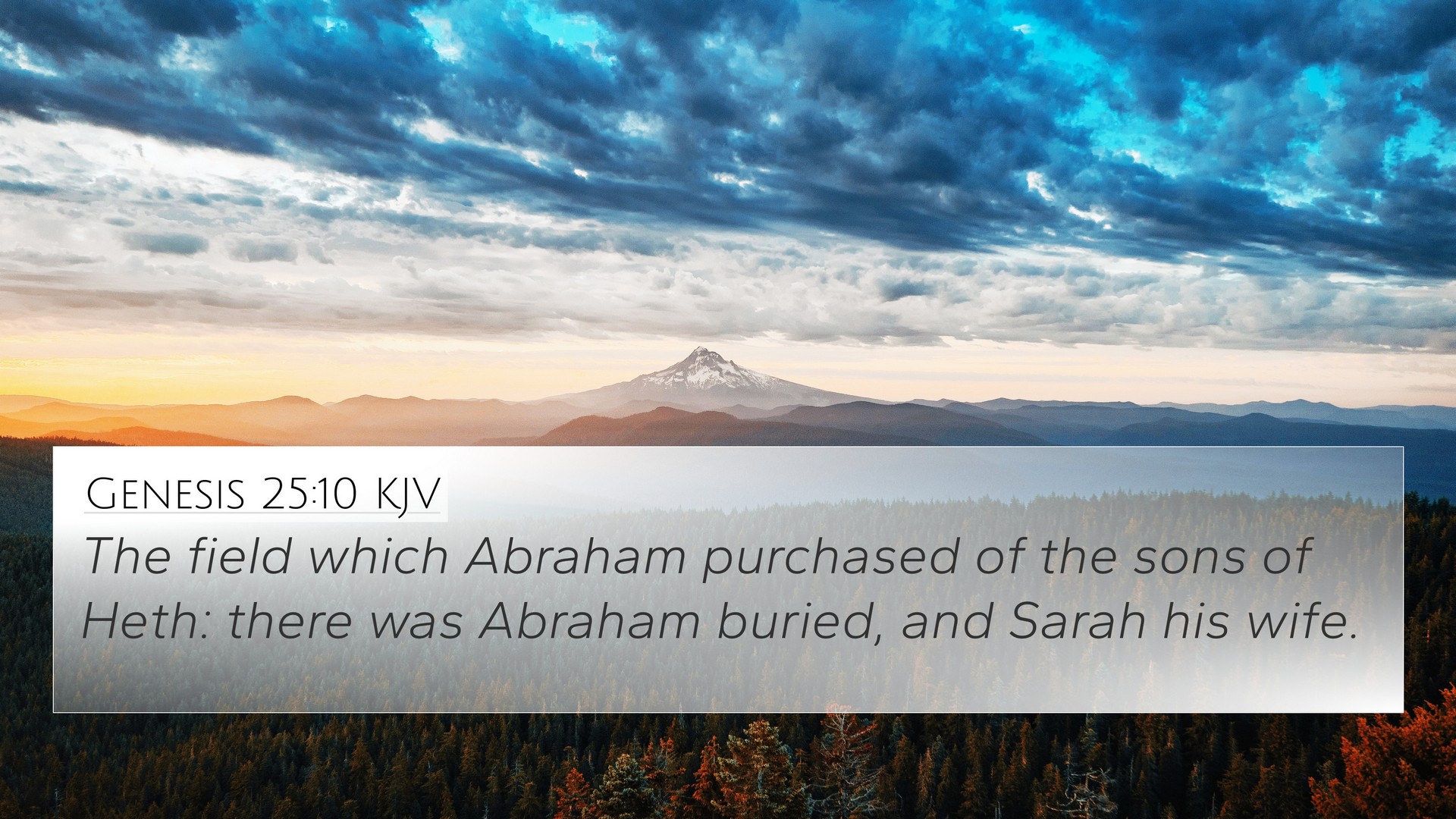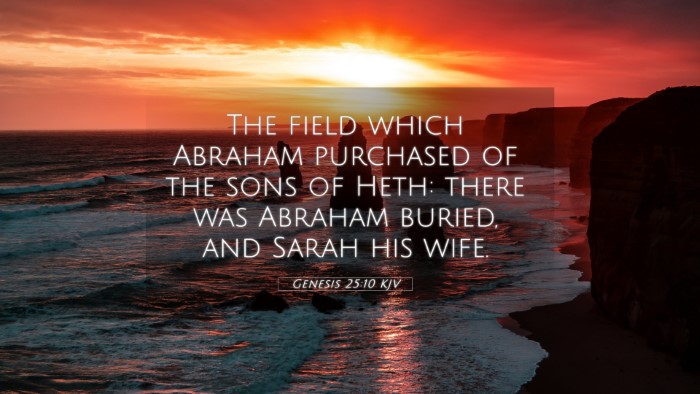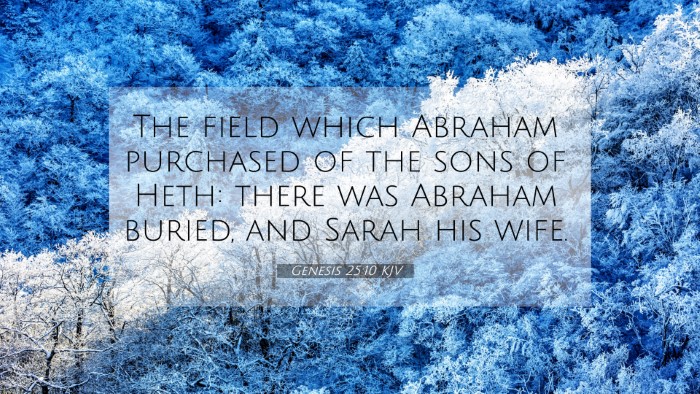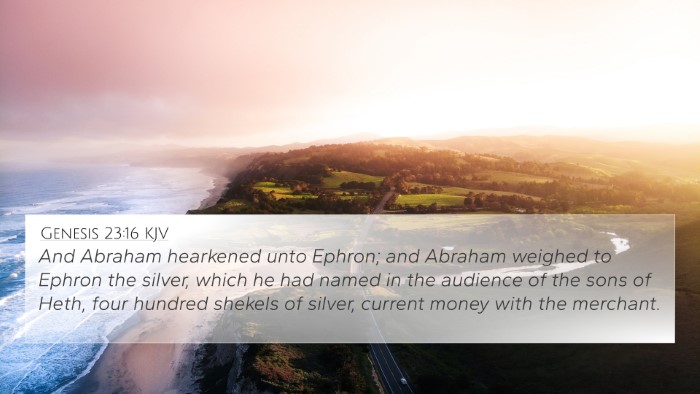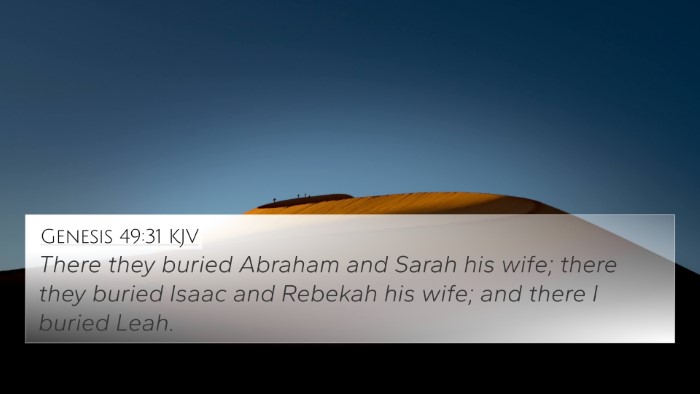Understanding Genesis 25:10
Genesis 25:10 states, “The field which Abraham purchased of the sons of Heth: there was Abraham buried, and Sarah his wife.” This verse is significant in the biblical narrative as it highlights key themes such as legacy, land ownership, and the covenantal promises associated with Abraham.
Verse Context
To fully grasp the meaning of this verse, it is essential to consider the context surrounding it. Abraham's burial site is more than just a geographical location; it represents the fulfillment of God’s promises and the hope of resurrection.
Commentary Insights
- Matthew Henry Commentary:
Henry emphasizes the importance of Abraham as the father of faith. The burial site signifies the place where God’s promises touch down on earth as it is a family inheritance, cementing Abraham’s legacy and connection to the land.
- Albert Barnes Commentary:
Barnes highlights that Abraham’s purchase of the cave in Machpelah is significant as it was the first piece of land that Abraham owned in Canaan, symbolizing God's promise of the land to his descendants. This act illustrates faith and the future hope of resurrection and eternal life.
- Adam Clarke Commentary:
Clarke notes the historical significance of the burial site. He mentions that it is documented as an eternal evidence of God's covenant with Abraham, reassuring the readers of God’s faithfulness throughout generations.
Thematic Connections
Genesis 25:10 serves as a touchpoint between several biblical themes:
- Legacy and Inheritance: The act of purchasing land for burial is a testament to Abraham's belief in God's promises regarding the land and the future of his descendants.
- Faith and Covenant: Abraham’s purchase signifies a deep faith in God’s covenant that He would give the land to Abraham's descendants.
- Death and Resurrection: The burial of Abraham and Sarah foreshadows the New Testament teachings about resurrection and eternal life.
Bible Verse Cross-References
This verse has several cross-references that enrich its understanding:
- Hebrews 11:9-10 - Discusses Abraham's faith in dwelling in the land of promise.
- Genesis 23:17-20 - Details the transaction of Abraham purchasing the cave of Machpelah.
- Genesis 12:7 - Highlights God's promise to Abraham regarding the land.
- Acts 7:16 - Mentions Abraham's burial and its significance in the history of Israel.
- Romans 4:13-16 - Explores the promise made to Abraham and his descendants through faith.
- 1 Corinthians 15:20-22 - Introduces the concept of resurrection through Christ.
- Genesis 49:30-31 - Refers to the burial place of the patriarchs, establishing a family bond.
Connections between Bible Verses
The connections between these verses and Genesis 25:10 illustrate a broader narrative in scripture, reinforcing themes of faith, promise, and covenant throughout the Bible. This serves as evidence of the overarching story of redemption and resurrection.
How to Use Bible Cross-References
Utilizing a Bible cross-reference guide can significantly enhance your study of scripture. By identifying connections between verses, readers can better understand the meanings and implications of individual verses within their theological and historical contexts.
Conclusion
Genesis 25:10 encapsulates critical aspects of the biblical narrative about Abraham’s life, faith, and legacy. By employing cross-referencing techniques, readers can explore deeper meanings and connections throughout scripture, ultimately gaining a richer understanding of God’s covenantal promises and the significance of faith in the biblical context.
Further Study Tools
To enhance your study experience, consider the following tools for Bible cross-referencing:
- Bible Concordances
- Topical Indexes
- Commentary Collections
- Study Bibles with Cross-References
- Online Bible Study Platforms
Engagement with the Text
As you study, ask yourself questions like:
- What promises does Genesis 25:10 remind us of in the New Testament?
- How does this verse reflect God's faithfulness across generations?
These inquiries can lead to deeper insights into both individual passages and the Bible as a unified whole.
